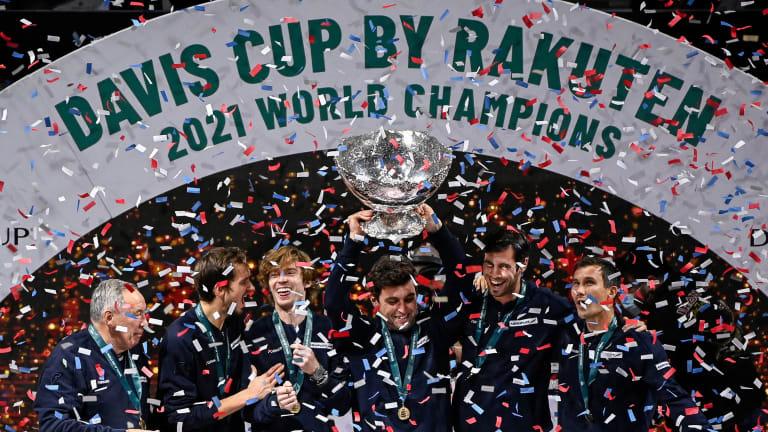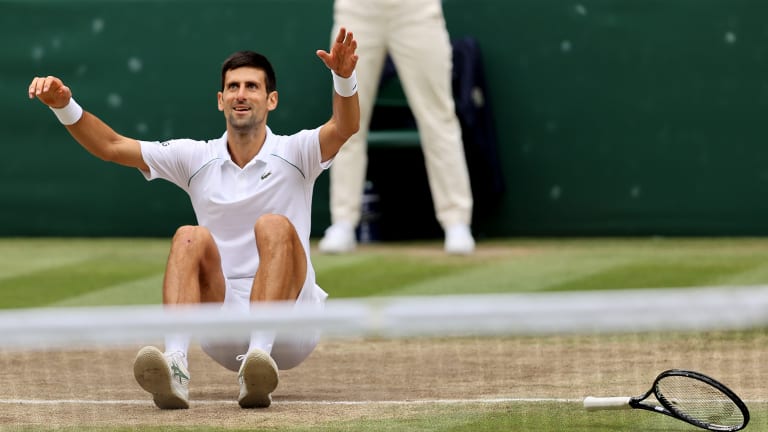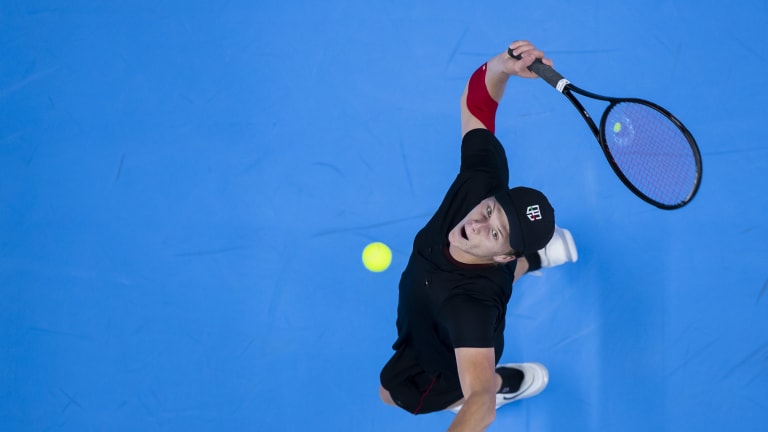Hi Joel,
Was that the calmest Davis Cup-winning celebration you’ve ever seen? Daniil Medvedev clinched Russia’s first Cup title since 2006…and then just walked up to the net and shook hands with the man he had beaten, Marin Cilic of Croatia. Medvedev couldn’t even muster a US Open-style dead-fish fall to the court.
That doesn’t take away from Medvedev or Russia’s accomplishment, of course. With two Top 10 singles players—Medvedev and Andrey Rublev—the Russians were the favorites. They showed up, they wanted it, and they came through. Cilic played some excellent tennis in the opening set, good enough to beat most players; but Medvedev just raised his level higher, which is what the top guys always seem able to do in this team competition. We’ve seen other players, like Novak Djokovic and Andy Murray, use Davis Cup titles as springboards to bigger things individually; perhaps Medvedev and Rublev are destined for similar leaps upward in 2022.
But that celebration made sense in a way, because Sunday’s final was something of an anti-climax. Such an historically important event should really take more than two matches, four sets, and a few hours to decide, don’t you think? In this case, Croatia didn’t even have a chance to use its biggest weapon, its world No. 1 doubles team of Pavic and Mektic.
Once again, I’m left with mixed feelings about a Davis Cup format. There were some great moments this year, that can only happen in this event—Feliciano Lopez bringing the Madrid crowd to its feet; players like Mikhail Kukushkin, Elias Ymer, and Borna Gojo playing far better than their rankings would lead you to believe was possible; Mektic and Pavic showing what a full-time doubles team can do, in winning the clinching point against Serbia.
But those moments, as usual, just make me wish Davis Cup could be better showcased. How do retain its traditional home-and-away energy, while also fitting it into the already-crowded ATP schedule? It sounds as if we’ll see a new format again next year. I like the idea of splitting the ties up between different cities, but I don’t know whether holding the final in Abu Dhabi, far from most teams’ fans, will be a satisfactory answer. We know the Kosmos group, which took over DC in 2019, promised billions in earnings; maybe Abu Dhabi is the only way to make good on that.
This Davis Cup was a bit of a microcosm of the men’s 2021 season: Djokovic was the big attraction for most of it, but the young guys—in this case Medvedev and Rublev—finished strong. It was an interestingly bifurcated year: On the one hand, Djokovic won his first 27 matches at the majors, something that hadn’t happened since Steffi Graf won all 28 in 1988. On the other hand, Medvedev and Alexander Zverev managed to break Djokovic’s stranglehold in the second half of the year, beating him at the Olympics, the US Open, and the ATP Finals. Right now it feels as if 2021 could be a transitional season, when the balance of power passes from one generation to the next. But I’ve said that a few times before in the Big Three era, and I haven’t been right yet.
What did you think of Davis Cup, Joel, and what do you think the most important aspects of the 2021 men’s season were?



